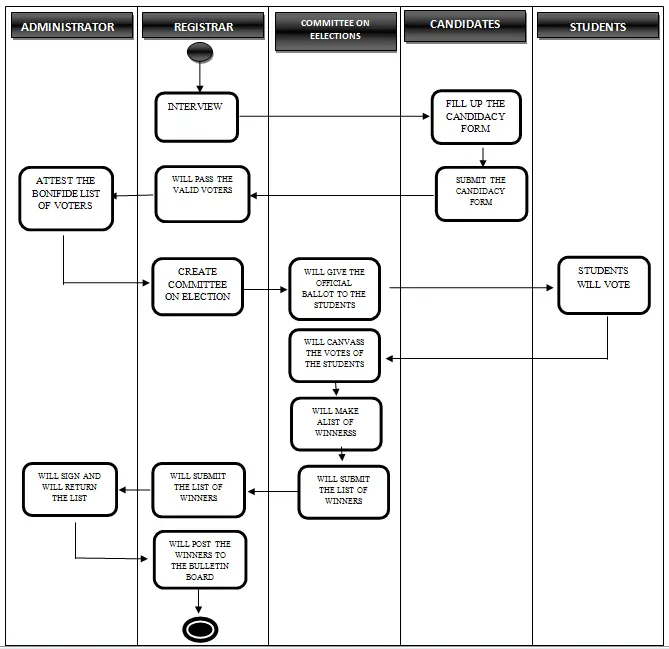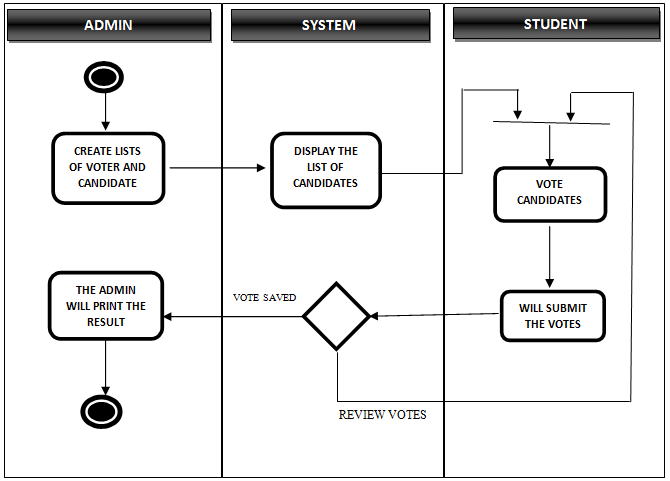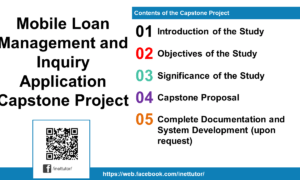Voting System Documentation Chapter 1,2 and 3
CHAPTER I
BACKGROUND OF THE STUDY
Introduction
Computer technology has been a great help to the improvement of one’s life. Most establishments, corporations and institutions had developed their own use of such technology to help themselves work more efficiently with less time and effort, resulting in better production, profit, and a more satisfied clientele. One example of computer technology is the creation of a computer system. A design, fit for the company’s needs as well as for the customer’s. A system that will help personnel work more efficiently especially in accessing and retrieving data in and less time as possible.
Automated Election is a system appropriate technology which has been demonstrated in the voting, counting, consolidating, canvassing and transmission of election results and other electoral processes.
Automated voting technologies are increasingly used in elections across the world, particularly because they are often seen as symbolic of a country’s level of modernization. The purpose of an Automated Election System is to deliver state of the art technology that is both efficient, allowing electoral authorities to utilize the benefits of a computerized system and also practical, maintaining the basic principles that the voters and election personnel are accustomed to. This solution makes use of the latest technologies that allow electoral authorities to complete counting and canvassing processes in a matter of hours, a task that traditionally took days. The system automates the scanning counting, consolidation and transmission of the votes, in a secure and traceable manner, reducing the chance of human error, tampering or fraud attempts and increases the integrity of the elections.
Last 2010, the government implemented the first Automated Elections in cooperation of Smartmatic company. This system promises a speedy and accurate count, a highly efficient reporting mechanism that democratizes the count and canvass of election results and most importantly, the extinction of “dagdag-bawas”.
According to the assessment of 2010 Automated Election in the Philippines by Christian S. Monsod from Ateneo de Manila, “There was no failure of elections, no catastrophic failure of technology or logistics, and no outrage over its conduct or results.”
Election is a beginning and an ending. A beginning of hope and an end of sacrifices. People have the ability to change our world by using the automated electoral system mechanisms which significantly reduce the chances of errors, because vote counting is based on an internal machine count rather than on individual ballots.
The Student Council elections have always been an annual activity for every school. It is an activity wherein each student is required to choose from a set of candidates who will represent each position in the Student Council. This institution had already conducted College Student Council Election of officers. It was evident unfortunately that the turnover of these said elections has a problem indeed. The creation of CSC Automated Election will help the school to make the work a lot easier and more effective because of the automation of tally of votes of students during the election period. Using computers, they would be the one to tally and transmit the votes without human intervention.
Statement of the Problem
This study aims to solve the following problems.
- Security of the votes of the students as well as the candidates.
- The counting of votes in CSC election results to time consuming due to volumes of paper.
- Miscounts of votes and erroneous counting of result due to the volumes of papers use in manual procedures.
- Invalid votes are evident that there is problem in the counting procedure of the students.
Objective of the Study
This study is proposed to develop the CSC Automated Election System that will create:
- Create a module that student will log in and will vote in a fast, easy secure and no hassle free.
- Create a module that automatically counts the number of votes per candidates once students finished voting.
- Create a module that will generate needed result that reduces the chances of errors, because vote counting is based on an internal machine count rather than human intervention.
- Create a module that will standardize voting in such a way that they will just click the candidate they choose and save it, to minimize invalid votes.
Scope and Delimitation
The researchers has anticipated covering in their study and program a system that is designed solely for College Student Council election only, the system could append instantly voters and candidates and would be responsible for counting the votes. The system was configured for at least 3-4 network computers. The system also has the capability to release required reports regarding the list of voters, candidates and the canvassing result and the system is designed with a user security access level in some services.
The researchers also made some limitations to their study, the list of courses is already predefined in the system upon when a voter or student is registered. Candidate’s record after the election will be saved and manually deleted on the system. Student that officially registered as voter can only vote. A candidate must first apply as candidate before registering as a voter.
Significance of the Study
CSC Automated Election can benefit the following:
CSC Adviser/CSC – because they can be able to get the newly elected officers as early as possible. Likewise, through the use of the system, the council can easily make some adjustments on how, when and who are the students that they need to turn over the position that they have.
Institution- because volumes of paper and human effort can lessen in canvassing the votes and electoral fraud will be eliminated.
Registrar– because no hassle for him/her to interview the candidates, to pass the valid voters to the administrator, create a committee on election and submit the list of winners to the administrator after the counting period. The only thing he/she needs to do when the system will be developed is to post the list of winners in the bulletin board after the Election.
Instructors- because there is no hassle for them assigning in every precincts as a committee on election.
Students- because their time in voting will be lessen and they will be having an assurance that their vote are counted. Likewise they can easily know the result of the election.
Candidates – because their votes will be secured and minimizes errors such as writing their names in a wrong position.
Researcher- because it can help them as a guide to enhance more from their future thesis.
END NOTES
- Carter Center/2005/Automated Voting and Election Observation/pdf file
- Gilat/2008/Automated Voting System/pdf file
- 09056718674| Jan. 2012 http://www.studymode.com/essays/Automated-Voting-System-898290.html
- ytchit28| May 2014 http://www.studymode.com/essays/Automted-Voting-System-52433903.html
CHAPTER II
SYSTEM ANALYSIS AND DESIGN
The Current System
The Student Council elections have always been annual activity for every school. It is an activity wherein each student is required to choose from a set of candidates who will represent each position in the Student Council. In order for the student to accomplish this, the student must go through several processes.
The registrar has the list of candidates and the candidates will be interviewed by the registrar. The candidates will fill up the candidacy form and will submit it to the registrar. The list of voters/enrolled students will be submitted to the administrator. The administrator will attest the bona fide list of students. The registrar now will create members of committee. The members of the committee will be assigned by the registrar to their respective precincts. The registrar will then give them the list of voters. The committee on elections will give the official ballot to the students to vote. After the voting procedure, the members of the committee will now canvass the votes, and will make the list of the winners to be submitted to the registrar and to be noted by the administrator. The copy of the result of canvassing will be posted on the bulletin board.
The figure shown below is the procedural presentation of the current process of College Student Council Voting System.

Activity Diagram of the Current Process of CSC Voting System in SLTCFPDI
Fig. 1.1 shows the current process of CSC Election in SLTCFPDI. Five entities are concern in the process: The Administrator, the Registrar, the Committee on Election, The Candidates and The Students. The process starts with the Registrar who will interview the Candidates and the Candidates fill up the candidacy form and will pass it to the registrar, after that the registrar will give the list of voters to the Administrator to attest the bona fide the official voters. Then the registrar now will create a Committee of Election from the instructors. The Committee on Election now will give the students the official ballot to vote their candidates, after that the Committee on Election now will canvass the votes after the voting process of the students to make the list of winners and will be submitted to the registrar. The Registrar now will submit the list of winners to the Administrator. The Administrator will sign and he will return it to the registrar to post the list of winners to the bulletin board.
The Propose System
The researchers believe that the CSC Election will greatly enhance the speed and efficiency of voting process if CSC Automated Voting System will be developed and implemented in this school.
In this system a student is given an identity card number that contains unique Id number and password. The system is responsible of determining the authenticity of the voter except for his/her Student ID number and password. Students that are officially registered as voter can only vote. When the student enters the valid id number and password to the system, the names of the candidates will be displayed and the student can now vote his/her chosen candidates
In addition, this system is designed in such a way that a student is not allowed to vote more than once. Once an individual has finished voting, his/her account will be disabled and the log in form will be displayed. His/her votes will be automatically added to the database. Data in this system is completely secured which means only authorized person or the Admin can update the information inside the system.
The figure shown below is the procedural presentation of the proposed process of College Student Council Automated Voting System

Activity Diagram of the Proposed Process of CSC Voting System in SLTCFPDI
Fig.1.2 Shows the process of the Proposed CSC Automated Election System. Three entities are concern in the process: the Admin, the Candidates, and the Voter. The process started to the Admin who will create lists of voter and candidate. After that the system will display the list of candidates. The voter will choose from the list of the candidates and will submit the votes, the system will ask the voter if he wants to save the vote he was made or he want to update/change his/her choice. If yes the vote will be save and the system will save the vote, and if no the system will display again the list of candidates to the voter who wants to change their votes. If the voting process is done the Admin will automatically print the results.
System Requirements
In order to make the system possible, certain hardware and software components are required.
| HARDWARE COMPONENTS | SPECIFICATIONS | QUANTITY |
| Computer System
Ø Processor
Ø Memory (RAM) Ø Hard disk Drive
|
Intel® Pentium ® Dual CPU E2200 @ 2.20 GHz 3.00 GB DDR 2 40 GB or Higher
|
3-5 |
| Monitor | Any compatible monitor | 1 |
| Mouse | Any compatible mouse | 1 |
| Keyboard | Any compatible printer | 1 |
| Printer | Any compatible printer | 1 |
Table 1.1 System Requirements (Hardware Components)
| SOFTWARE COMPONENTS | SPECIFICATIONS |
| OPERATING SYSTEM | Microsoft Windows XP, 7 |
| APPLICATIONS | XAMPP v 3.2.1
Microsoft Office Adobe Flash and Adobe Photoshop Microsoft Visual Basic 6.0 mysql-connector-odbc-5.1.11-win32 |
Table 1.2 System Requirements (Software Components)
To be able to develop and fulfill the proposed system, the researchers will be needing minimum of four (3-5) personal computers which is run by windows XP or 7 operating system service pack 2 32-bit. Software applications will be used such as the Microsoft Word, Microsoft Excel, and Microsoft Visual Basic 6.0 will be the programming language and XAMPP v3.2.1 that will be used as the host network of the system and also the database. We also need mysql-connector-odbc-5.1.11-win32 to connect Vb 6.0 to Xampp mysql.
DEFINITION OF TERMS
For easier understanding, the following terms have been defined in this study.
Election- the process of electing candidates in CSC Election
CSC- College Student Council (SLTCFPDI)
Reduce- make smaller or lessen amount of paper in voting procedure.
Voter- one who votes/one who has the right to vote in the system.
Vote- process of voting in the system.
Canvass– the process of counting the votes of the voter.
Candidate– the one who will represent each position in the student council.
Invalid– informal vote, not counted votes.
Log in– to entering username and password to recognize you to begin a computer.
Update– to bring up to date and save the changes you made session.
Revise/Review– reedit the vote.
Submit- to save the vote of the voter to the system.
Print- to produce a copy of result in automated election.
Display- to display the list of registered candidates.
Chapter III
RESEARCH METHODOLOGY
In this chapter, the research methodology used to achieve the study will be presented which comprises of the procedures, data collection and tools necessary in developing the proposed system.
METHODOLOGY USED IN DEVELOPING THE SYSTEM
Methodology is a guiding approach for solving a problem, with specific components such as phases, tasks, methods, techniques and tools. In the development of the study, the researchers executed the System Development Life Cycle. System development life cycle (SDLC) is the process of understanding how an information system can support business needs, design and build the system and deliver it to users. It is used in analyzing and planning the system. The System Development Life Cycle has seven stages:
First Stage: Planning
Second Stage: Analysis of the requirement
Third Stage: System Design
Fourth Stage: System Coding
Fifth Stage: System Testing
Sixth Stage: System Implementation
Seventh Stage: System Maintenance
Developing the System Using the Seven Stages of System Development Life Cycle
Planning: During Planning Stage, the researchers observed the current process of election of CSC officers in SLTCFPDI and analyze if there are problems on the process. The researchers also conducted several observation and found out that there are problems in the manual election process in the institution. Therefore, we give the system to the client, expect for a positive feedback and maintain the Online Grading System. The researchers conducted interviews to the registrar, CSC Adviser, and selected instructors, students and Comelec officers to gather needed information to enable to foresee the probable solutions to the problems of the CSC Election process in SLTCFPDI.
Analysis of the requirement: Within this phase, the researchers analyzed the nature of the information and the functions of the software which are required for the system. The researchers study all the requirements and try to analyze the performance of the system which is to be developed. They also made sure that they get enough information and resources for structuring the suitable system.
System Design: In this third stage of SDLC, functional, support and training requirements are translated into preliminary and detailed designs. Decisions are made to address how the system will meet functional requirements. A preliminary system design, emphasizing the functional features of the system, is produced as a high-level guide. Then a final system design is produced that expands the design by specifying all the technical detail needed to develop the system.
System Coding: During the system coding, the researchers will prepare the codes needed for the development of the system. The occurrence of change is taking place. The Coding procedure will be the hardest part of the system development because it requires a lot of time, effort and patience for the coder because during this procedure, several errors will occur in
System Testing: In the fifth stage, the researchers are done with the coding stage. Once the system is built testing of the system must take place to ensure workability and brings all the pieces together into a special testing environment, then checks for errors, bugs and interoperability. Any problem that exists will be found and addressed. In this phase, verification and validation are used.
System Implementation: In this sixth stage of SDLC, this will be the period in which the system will be installed and supported in the institution. Now the system is ready for an actual working environment, training is the most important in this phase.
System Maintenance: In the seventh stage of SDLC, changes, corrections additions are made. This is the most important step of all and may go on forever.
Credits to the authors and developers of the project.
You may visit our facebook page for more information, inquiries and comments.
Hire our team to do the project.

